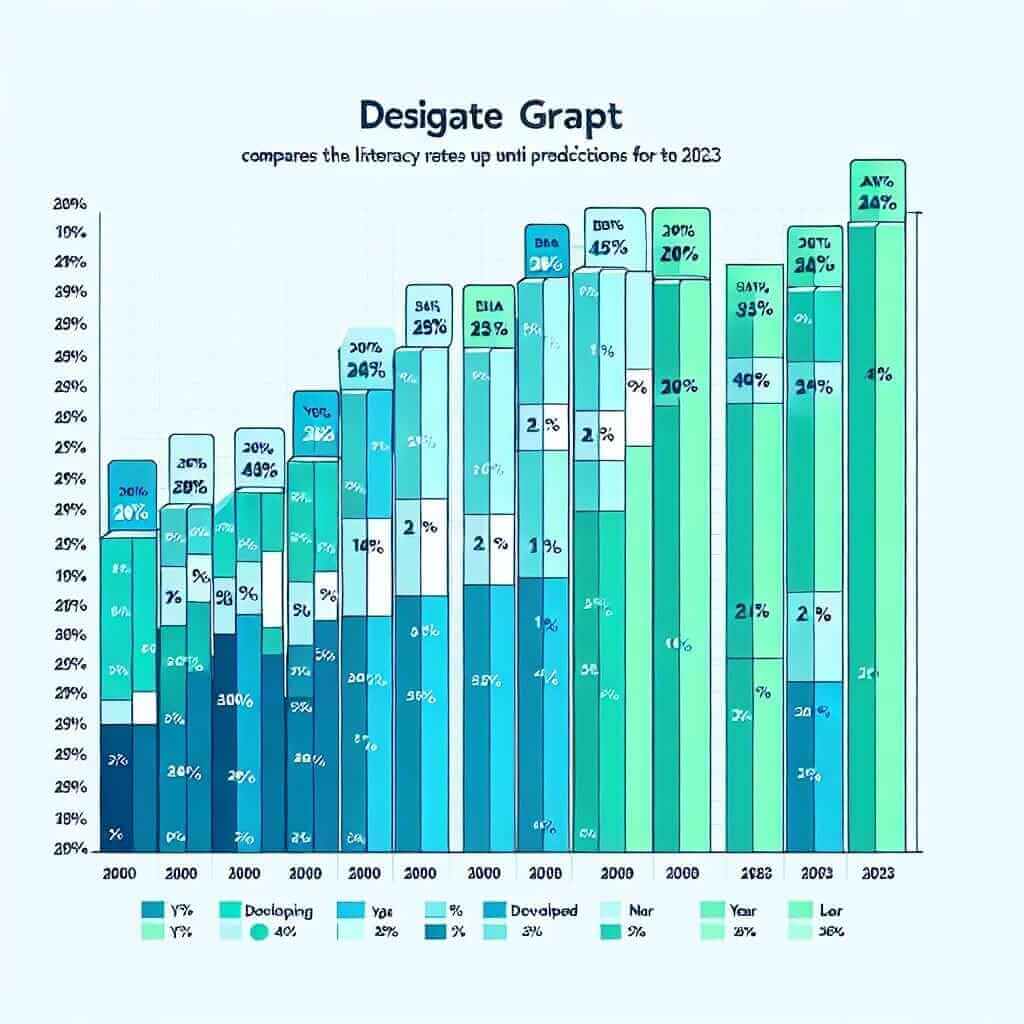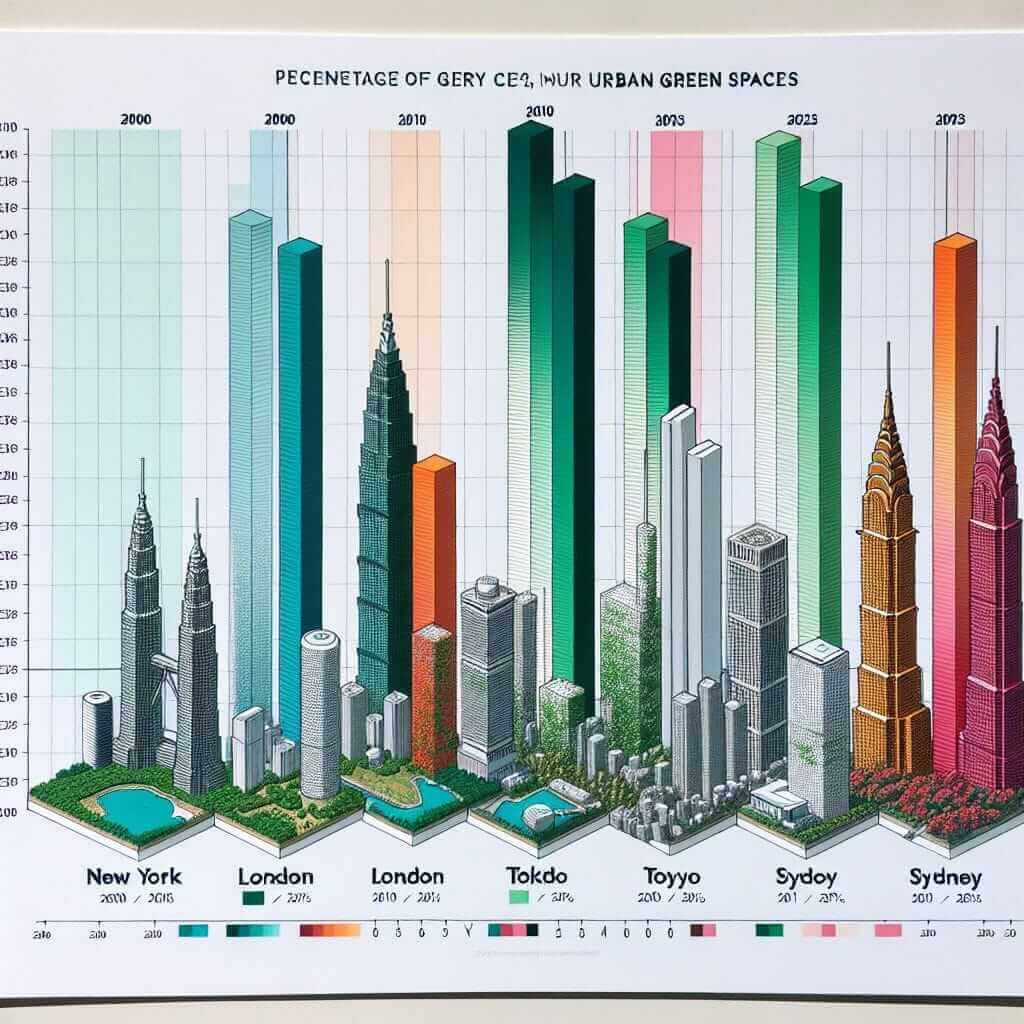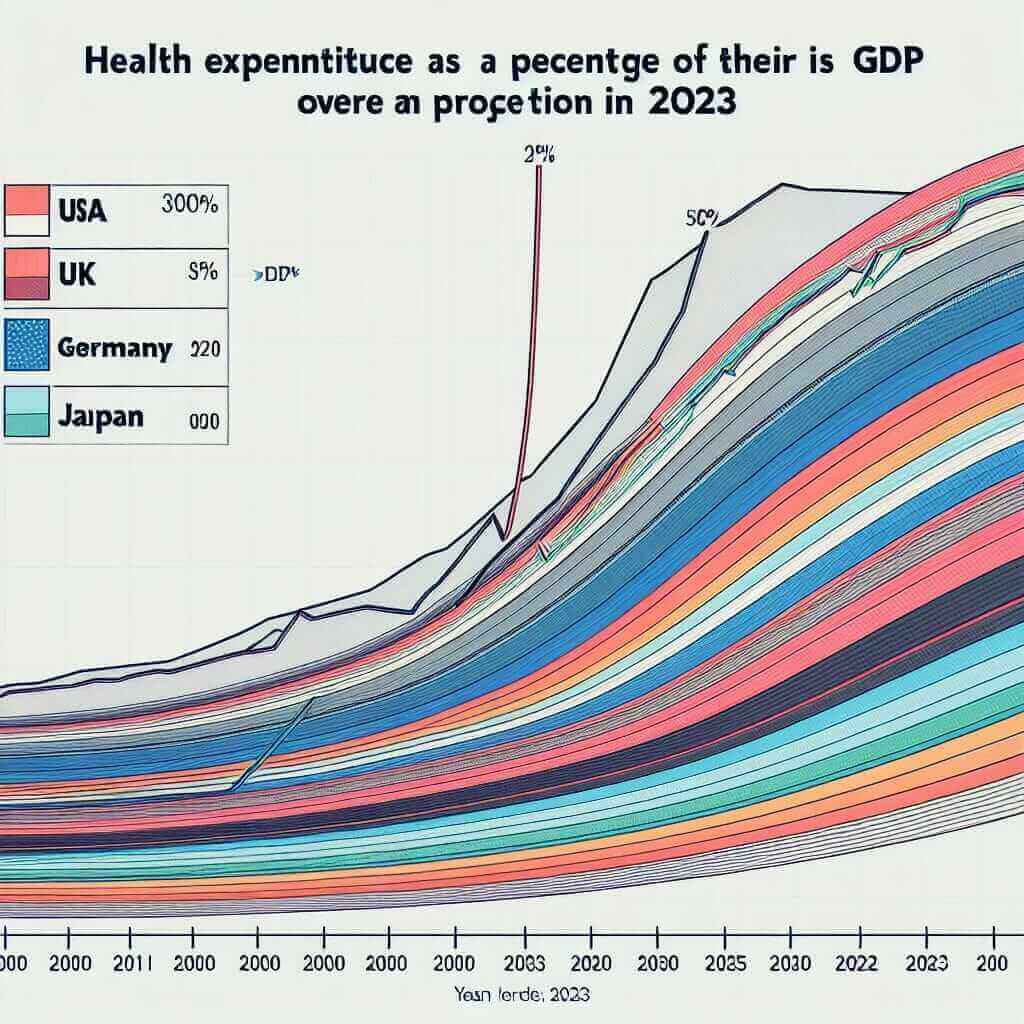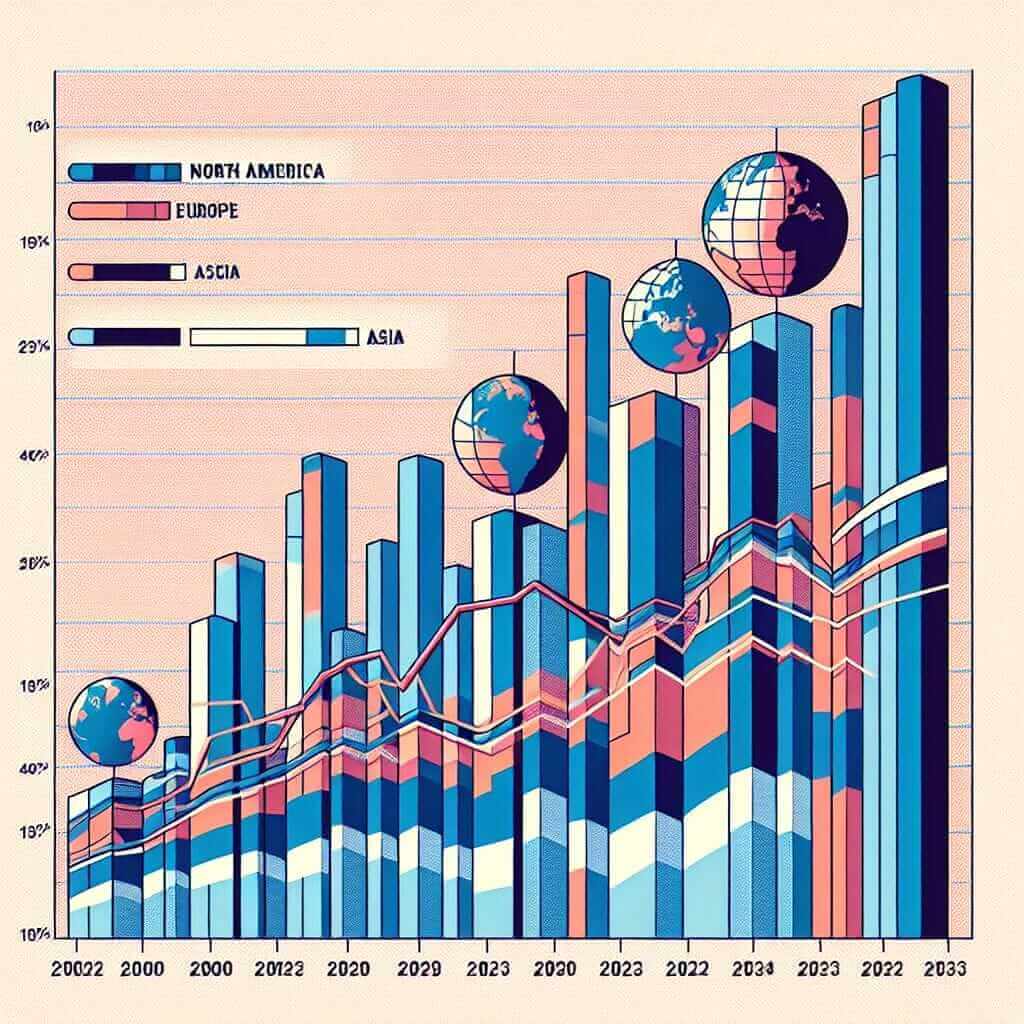Introduction
The topic of literacy rates in developing and developed countries from 2000 to 2023 is a recurrent theme in the IELTS Writing Task 1. Candidates are often required to analyze and compare data, usually presented in charts or graphs. This task assesses your ability to interpret data and describe the significant features effectively. In this article, we’ll explore this topic in detail, offer valuable writing tips, and provide a complete sample answer.
Table Of Contents
Task 1 Prompt Examples
- Sample Prompt 1: The bar chart below shows the literacy rates of developing and developed countries from 2000 to 2023. Summarize the information by selecting and reporting the main features, and make comparisons where relevant.
- Sample Prompt 2: The table below provides information about the literacy rates in various developing and developed countries from 2000 to 2023. Summarize the information by selecting and reporting the main features, and make comparisons where relevant.
- Sample Prompt 3: The line graph below illustrates the changes in the literacy rates in developing and developed countries between 2000 and 2023. Summarize the information by selecting and reporting the main features, and make comparisons where relevant.
Let’s choose the first prompt for our detailed analysis and sample answer.
Data Representation
To proceed effectively, let’s create a bar chart depicting the literacy rates in developing and developed countries from 2000 to 2023.
Bar Chart
Year | Developing Countries | Developed Countries
--------------------------------------------------
2000 | 58% | 99%
2005 | 65% | 99%
2010 | 70% | 99%
2015 | 74% | 99%
2020 | 78% | 99%
2023 | 80% | 99% Literacy Rates Comparison
Literacy Rates Comparison
Analysis of the Bar Chart
Observations:
- General Increase: Both developing and developed countries have seen improvements in literacy rates over the years.
- Stability: Developed countries maintained a high and constant literacy rate of 99% throughout the period.
- Growth in Developing Countries: Developing countries showed a steady increase from 58% in 2000 to 80% in 2023.
Detailed Analysis and Writing Sample
Writing Guidelines:
- Introduction: Paraphrase the task prompt.
- Body Paragraphs: Focus on the specific details and comparisons.
- Conclusion: Summarize the key findings.
Sample Essay
The bar chart illustrates the literacy rates in developing and developed countries between 2000 and 2023. Overall, literacy rates in both categories have improved, with developed countries maintaining their high rates and developing countries showing significant growth.
In the year 2000, the literacy rate in developing countries was 58%, whereas developed countries had an almost perfect literacy rate of 99%. Over the next five years, literacy rates in developing countries rose to 65%, maintaining a consistent upward trend.
By 2010, there was a notable increase in the literacy rate of developing countries, reaching 70%. This progress continued, and by 2015, the rate had climbed to 74%, while developed countries still maintained their 99% literacy rate.
In the following years, the literacy rate in developing countries continued to improve. By 2020, it reached 78%, and finally, by 2023, the rate was 80%. Throughout this entire period, developed countries consistently maintained a literacy rate of 99%.
In summary, while developed countries remained at a steady and high literacy rate, developing countries exhibited a continuous and significant increase, closing the gap over the 23-year period.
Word count: 195 words
Key Tips for Writing
- Paraphrasing: Use synonyms and change the structure of the sentences provided in the prompt.
- Time References: Use appropriate time markers like “in the year 2000,” “by 2010,” or “by 2023.”
- Comparisons: Use comparative language effectively (e.g., “whereas,” “while,” “in contrast to”).
- Data Description: Focus on major trends, outlying data points, and significant changes.
Essential Vocabulary
- Illustrate (v) /ɪˈlʌs.treɪt/: To show or describe something.
- Maintain (v) /meɪnˈteɪn/: To keep at a certain level.
- Significant (adj) /sɪɡˈnɪf.ɪ.kənt/: Important or noticeable.
- Steady (adj) /ˈsted.i/: Constant and consistent.
- Notable (adj) /ˈnəʊ.tə.bəl/: Worthy of attention or notice.
- Gap (n) /ɡæp/: A disparity or difference.
Conclusion
To excel in the IELTS Writing Task 1, it is crucial to practice analyzing different types of data presentations and making coherent comparisons. Consistent practice with sample prompts and an understanding of the trends in the data can significantly improve your writing skills and help you achieve a higher band score.


